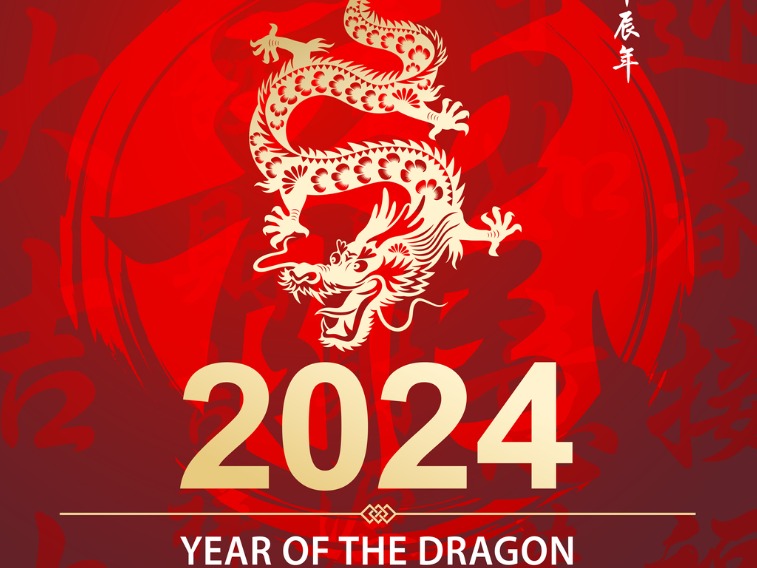Through a bold approach to innovation and a commitment to excellence, Anna Kasman has redefined the sushi dining experience, helping to shape the future of hospitality.


Insight
Could the Year of the Dragon bring us some good luck in what otherwise looks a challenging year?

According to Chinese tradition, the Year of the Dragon is associated with good luck, strength and health, something that the global economy might just need in 2024. From the outset it looks like a challenging year, which could be exacerbated by a range of uncertainties, including ongoing conflicts in Eastern Europe and the Middle East, persistent geopolitical tensions between the United States and China and inflation only recently coming under control. To top it all off, we have the US Presidential Election in November 2024 that brings with it the potential for significant shifts in economic, trade and foreign policy that could impact the broader global economy in years to come.
The need to address inflation – which, for advanced economies in late 2022, reached its highest levels in around 40 years – saw central banks drive policy rates higher at a very rapid pace. However, it takes time for tighter monetary policy to fully impact economies – some estimates suggest it can take between 18 months to two years – meaning that much of the burden of the rate hikes will be felt in 2024. We forecast global growth to slow to 2.7% in 2024 (from 3.1% in 2023) – well below the long-term average of 3.4%.
This slower growth trend will be associated with weaker goods consumption in the major advanced economies – something that will negatively impact activity in China and East Asia – home to a dominant share of global manufacturing. By extension, this could hit demand for Australian resources exports, the raw materials that supply these sectors.
That said, there could be some bright spots. A key constraint on China’s economy in 2023 was lacklustre domestic consumption. Limited financial transfers from governments to households and the prospect of sudden, strict lockdowns during the zero-COVID period battered consumer confidence, leading to only a modest rebound in spending when these policies were abandoned (compared with the experience of advanced economies). Reports suggest that China’s economic growth target for 2024 will remain unchanged at “around 5%”, with authorities noting a need to provide increased fiscal support to underpin growth.
At this stage it is not entirely clear what this spending will entail, however targeted fiscal spending could boost confidence and support stronger household consumption growth in 2024. This would move China’s economic model to a more sustainable growth path when compared with the investment and export-led approach that re-emerged during the early stages of the COVID-19 pandemic.
For Australia and much of South East Asia, another positive could be the return of Chinese tourism on a large scale. Prior to the COVID-19 pandemic, China had emerged as a major driver of the global tourism market. However, its borders were closed for longer than most other countries, only reopening in January 2023. The recovery since has been gradual, with many major destinations in Asia receiving between 30-40% of their 2019 visitor numbers from China. Reports suggest that delays in processing passports and visas have been a key hurdle for outbound tourists and that this bottleneck could ease in 2024.
Finally, the diplomatic relationship between the Australian and Chinese government has improved over the past year. Tensions rose in the aftermath of the pandemic – leading to a range of official and unofficial trade barriers on a range of Australian exports. China recommenced coal imports from Australian in January 2023 and scrapped tariffs imposed on barley imports in August. There is growing optimism that tariffs on Australian wine will be removed in early 2024. This trend could see improved opportunities for Australian firms in China in 2024.
Important information
The information contained in this article is gathered from multiple sources believed to be reliable as at December 2023 and is intended to be of a general nature only. It has been prepared without taking into account any person’s objectives, financial situation or needs. NAB does not guarantee the accuracy or reliability of any information in this article which is stated or provided by a third party. Before acting on this information, NAB recommends that you consider whether it is appropriate for your circumstances. NAB recommends that you seek independent legal, property, financial and taxation advice before acting on any information in this article. ©2023 NAB Private Wealth is a division of National Australia Bank Limited ABN 12 004 044 937 AFSL and Australian Credit Licence 230686
© National Australia Bank Limited. ABN 12 004 044 937 AFSL and Australian Credit Licence 230686.